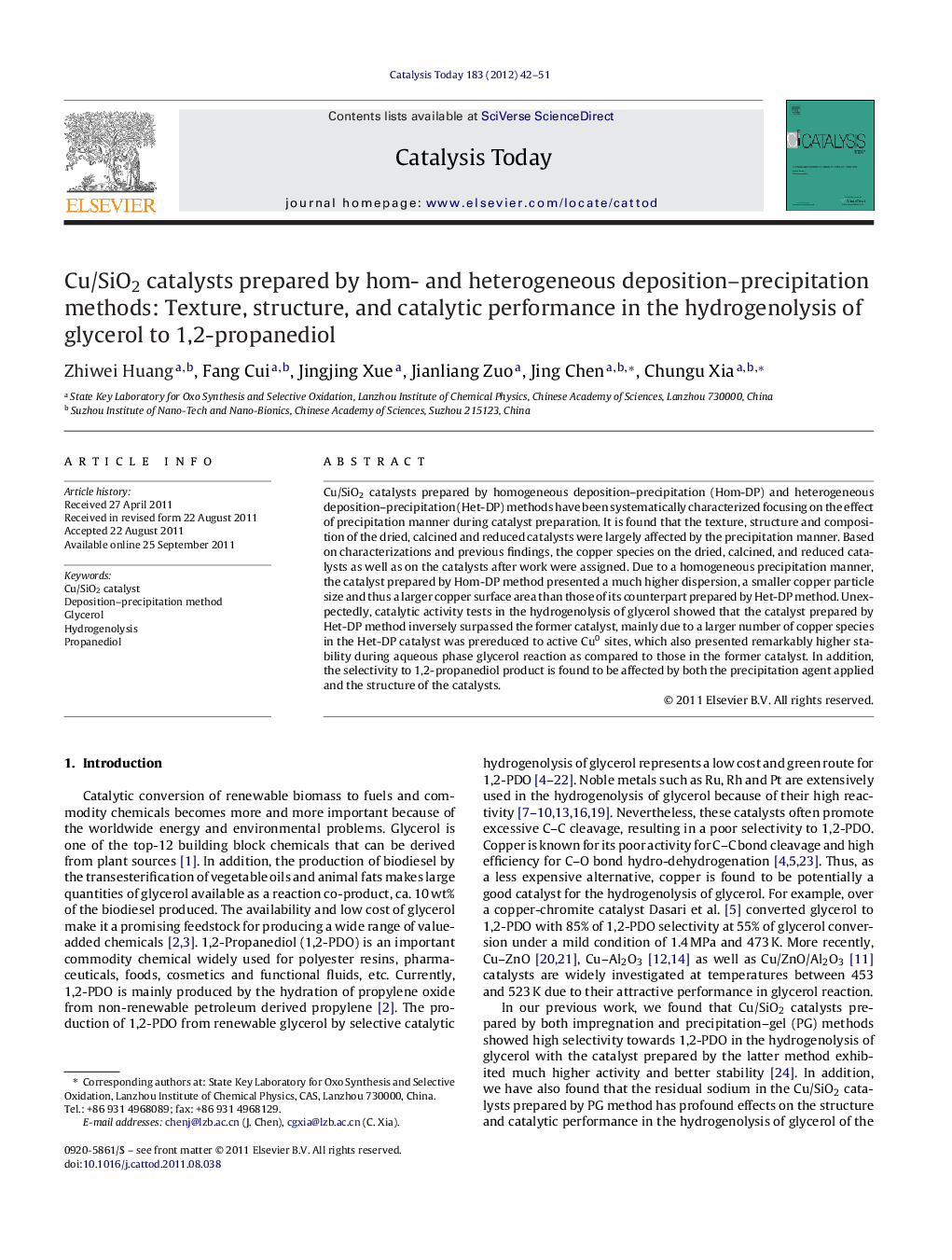| Article ID | Journal | Published Year | Pages | File Type |
|---|---|---|---|---|
| 55412 | Catalysis Today | 2012 | 10 Pages |
Cu/SiO2 catalysts prepared by homogeneous deposition–precipitation (Hom-DP) and heterogeneous deposition–precipitation (Het-DP) methods have been systematically characterized focusing on the effect of precipitation manner during catalyst preparation. It is found that the texture, structure and composition of the dried, calcined and reduced catalysts were largely affected by the precipitation manner. Based on characterizations and previous findings, the copper species on the dried, calcined, and reduced catalysts as well as on the catalysts after work were assigned. Due to a homogeneous precipitation manner, the catalyst prepared by Hom-DP method presented a much higher dispersion, a smaller copper particle size and thus a larger copper surface area than those of its counterpart prepared by Het-DP method. Unexpectedly, catalytic activity tests in the hydrogenolysis of glycerol showed that the catalyst prepared by Het-DP method inversely surpassed the former catalyst, mainly due to a larger number of copper species in the Het-DP catalyst was prereduced to active Cu0 sites, which also presented remarkably higher stability during aqueous phase glycerol reaction as compared to those in the former catalyst. In addition, the selectivity to 1,2-propanediol product is found to be affected by both the precipitation agent applied and the structure of the catalysts.
Graphical abstractFigure optionsDownload full-size imageDownload high-quality image (209 K)Download as PowerPoint slideHighlights► Hom- and heterogeneous deposition-precipitation methods prepared Cu/SiO2 catalysts. ► The structure and catalytic performance in glycerol hydrogenolysis were studied. ► Different preparation method resulted in different structure and catalytic property. ► Preferably to produce catalyst by heterogeneous deposition-precipitation method.
